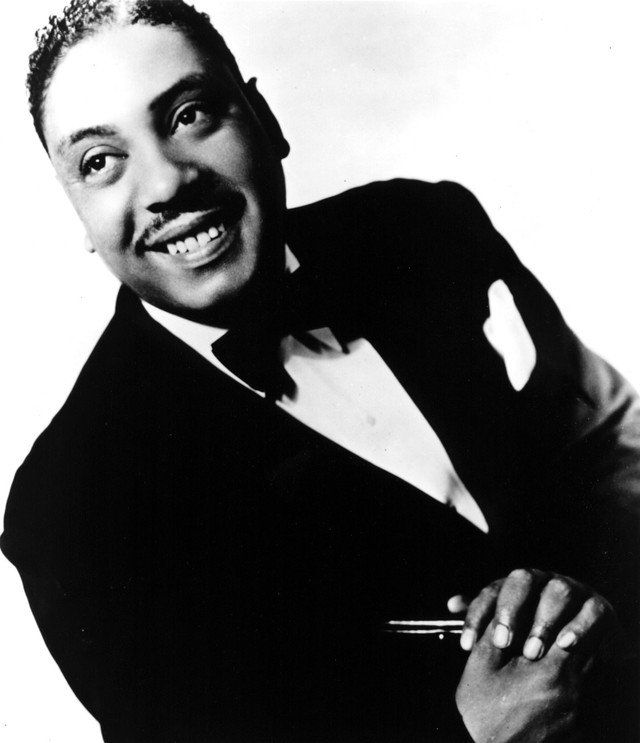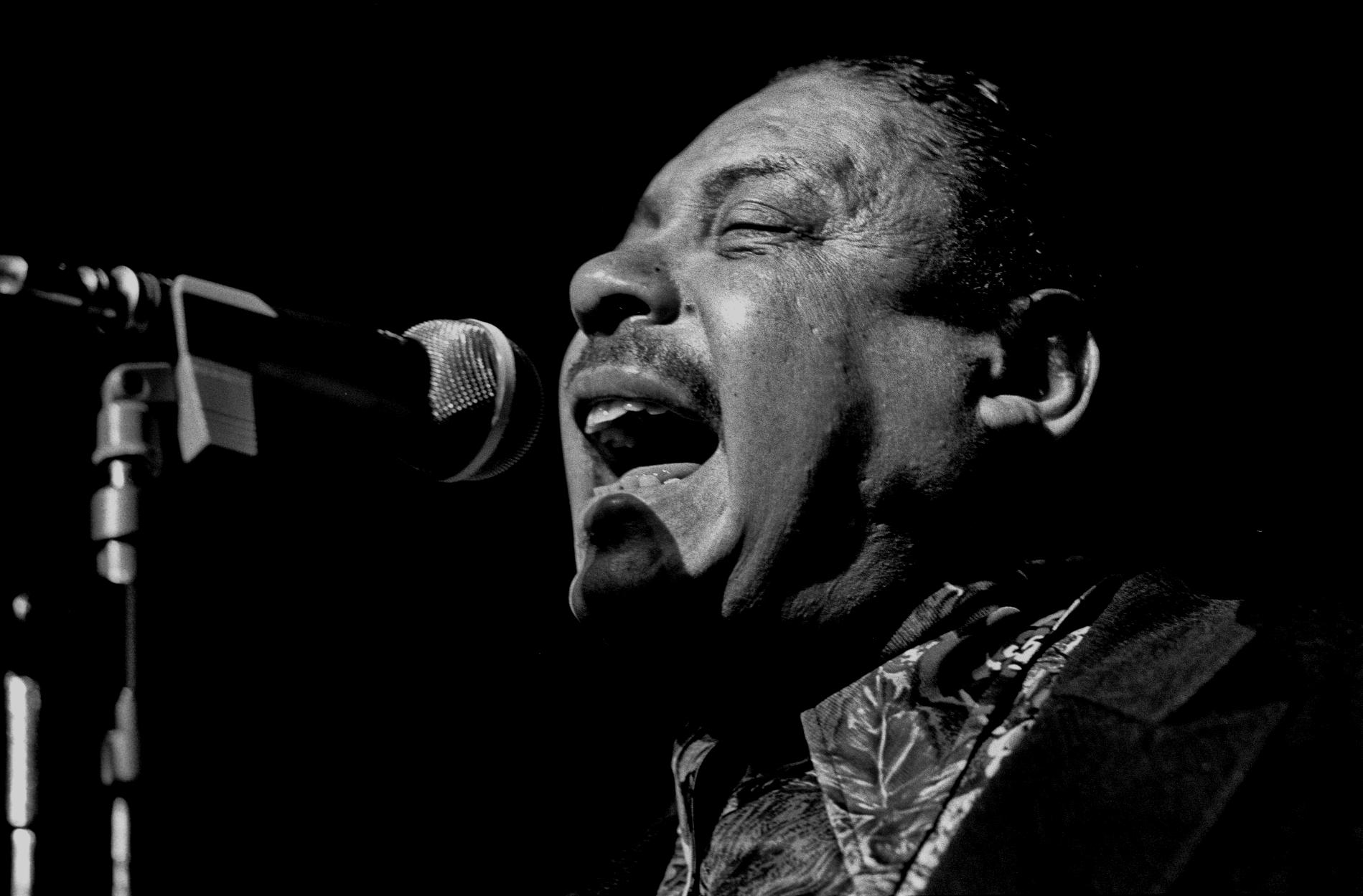Big Joe Turner: The Boss of the Blues
Introduction
Big Joe Turner stands as one of the most powerful and influential vocalists in the history of American music. Known as the “Boss of the Blues,” Turner bridged the gap between the blues and early rock and roll, his thunderous voice echoing across decades of musical evolution. A towering presence both physically and artistically, Turner’s career spanned more than half a century, influencing countless artists across blues, jazz, and rock. This biography explores his life and legacy, from humble beginnings to worldwide acclaim.

Childhood
Joseph Vernon Turner Jr. was born on May 18, 1911, in Kansas City, Missouri—a hotbed of jazz and blues music during the early 20th century. His father, a cook, died when Joe was only four years old, a tragedy that left a lasting impact. Raised by his mother and grandmother, Turner grew up in a deeply religious household and began singing in church at an early age. His love for music, especially gospel, planted the seeds for his later career in secular genres.
Turner never learned to read or write music and received little formal education, dropping out of school after the third grade. Instead, he worked various jobs to help support his family. One of his earliest and most formative experiences came as a “singing bartender” at Kansas City nightspots, where he developed his signature shouting vocal style to project over the din of rowdy crowds.
Sources:
- Guralnick, Peter. Sweet Soul Music (Back Bay Books, 1999)
- Komara, Edward M. Encyclopedia of the Blues (Routledge, 2006)
Youth
By his teens, Turner was already making waves on the Kansas City music scene. He formed a lasting partnership with pianist Pete Johnson, another Kansas City native. Their dynamic duo—Turner’s booming vocals and Johnson’s boogie-woogie piano—became central to the city’s nightlife. The duo’s big break came in 1938 when impresario John Hammond invited them to perform at Carnegie Hall for the famous “From Spirituals to Swing” concert, which introduced African American music to elite white audiences.
That performance of “Roll ’Em Pete,” a rollicking, raucous number, was a sensation and is now considered one of the earliest recordings to resemble rock and roll. The song became a classic, later re-recorded multiple times by Turner and covered by numerous artists.
Sources:
- Palmer, Robert. Deep Blues (Penguin Books, 1982)
- Santelli, Robert. The Big Book of Blues (Penguin Books, 1993)
Adulthood
Through the 1940s and 1950s, Big Joe Turner built an extraordinary career, touring extensively and recording for various labels. Though rooted in blues, his voice adapted effortlessly to jazz, jump blues, and rhythm and blues (R&B). He recorded with Count Basie, Art Tatum, and many other jazz greats, while also influencing the postwar jump blues movement.
The 1950s were Turner’s most commercially successful years. Signing with Atlantic Records in 1951, he became one of the label’s most bankable stars. His hits during this era included “Chains of Love,” “Honey Hush,” “Flip, Flop and Fly,” and the legendary “Shake, Rattle and Roll” (1954). The latter became a rock and roll anthem and was famously covered by Bill Haley & His Comets, who helped introduce Turner’s music to a white teen audience.
Turner’s stage presence was equally commanding. His deep, resonant voice could carry across large auditoriums without a microphone, and his delivery was full of emotional weight, humor, and sheer force. He was a musical giant in every sense of the word.
Sources:
- Gillett, Charlie. The Sound of the City: The Rise of Rock and Roll (Souvenir Press, 1970)
- Bogdanov, Vladimir, et al. All Music Guide to the Blues (Backbeat Books, 2003)
Major Compositions
While Big Joe Turner was more of a vocalist than a composer, many of the songs he popularized left a lasting mark on music history. His most iconic recordings include:
- “Roll ’Em Pete” (1938): Often cited as a precursor to rock and roll, this track brought Turner national attention.
- “Chains of Love” (1951): A blues ballad that showcased Turner’s more sensitive vocal side.
- “Honey Hush” (1953): A bold and bawdy jump blues number that was a favorite among R&B fans.
- “Shake, Rattle and Roll” (1954): Perhaps his most famous recording, it helped define the early rock and roll sound.
- “Flip, Flop and Fly” (1955): Another energetic anthem that blended blues and boogie with a youthful, rebellious tone.
These songs combined lyrical suggestiveness with a swinging beat, laying the groundwork for the emerging rock genre and influencing artists such as Elvis Presley, Little Richard, and Jerry Lee Lewis.
Death
Big Joe Turner remained active into the 1970s and 1980s, enjoying a late-career renaissance thanks to renewed interest in blues and boogie-woogie. He recorded with European labels, played international festivals, and was inducted into the Blues Hall of Fame in 1983. Despite declining health, he continued to perform until shortly before his death.
Turner died of heart failure on November 24, 1985, in Inglewood, California, at the age of 74. His passing marked the end of an era but also solidified his legacy as a foundational figure in American music. He was posthumously inducted into the Rock and Roll Hall of Fame in 1987, affirming his central role in the birth of rock.
Conclusion
Big Joe Turner’s voice helped define the blues, reshape jazz, and ignite the fire of rock and roll. With a vocal style that was both raw and elegant, he transcended racial and genre boundaries, bringing the power of African American music to a broader audience. Turner’s influence can be heard in generations of musicians, from Ray Charles and B.B. King to Bruce Springsteen and the Rolling Stones.
A true original, Big Joe Turner was more than a singer—he was a force of nature. His story is a testament to the power of music to move people, break barriers, and change the world.

Comments are closed